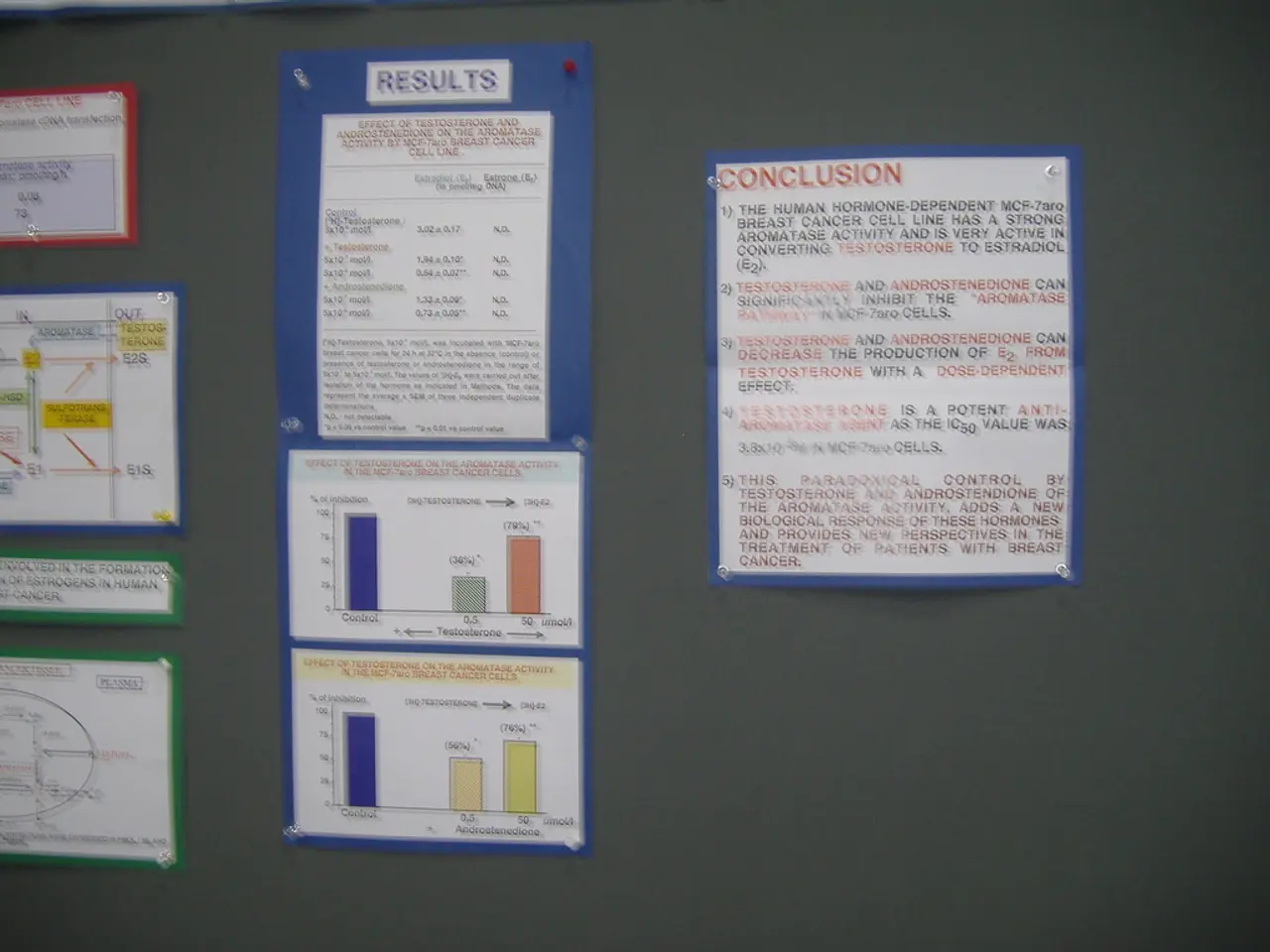Banks Clash Head-On with Two Giant Competitors: VTB Fights Back
VTB's Financial Performance and the Transition to NNSL
In the first half of 2025, VTB, one of Russia's leading banks, experienced a significant shift in its financial landscape. The bank recorded a steep rise in income from financial instruments, amounting to 233 billion rubles from the "other operating" category, and a total net profit of 280.4 billion rubles for the period. However, the bank's net interest income decreased by half compared to the same period in 2024, falling to 146.8 billion rubles.
This financial evolution comes as the Russian banking sector prepares to transition from the international standard "Basel III" to the National Normative for Short-Term Liquidity (NNSL) by October 1, 2025.
The National Normative for Short-Term Liquidity (NNSL)
The NNSL is a Russian regulatory liquidity standard designed to complement and adapt global liquidity rules, such as those in Basel III, to the specific conditions of the Russian banking system and financial markets.
Key Differences between Basel III and NNSL
- Scope and Focus Differences: Basel III focuses on ensuring banks hold sufficient high-quality liquid assets (HQLA) to cover net cash outflows over a 30-day stress horizon, while NNSL emphasizes liquidity over a shorter horizon, typically one business day, reflecting the operational and market realities in Russia.
- Calibration of Stress Scenarios: Basel III scenarios are standardized globally but include assumptions about deposit run-offs, wholesale funding shocks, and contingent liabilities based on developed markets. NNSL scenarios are tailored specifically to the Russian market, incorporating local banking behavior, deposit structures, interbank market specifics, and the role of the Central Bank of Russia (CBR).
- Definition and Composition of Liquid Assets: Basel III defines HQLA in clear categories with strict criteria, while the NNSL allows some differences in asset eligibility and haircut parameters.
- Calculation Methodology and Reporting: Basel III LCR calculation requires detailed, granular reporting of inflows and outflows over 30 days, while NNSL calculation is designed for daily monitoring by Russian banks, focusing on daily liquidity gaps.
- Regulatory Purpose and Impact: Basel III aims to improve systemic resilience by ensuring banks globally manage liquidity risk uniformly, while NNSL serves as a national supplementary tool aligned with the CBR’s liquidity policy, emphasizing immediate liquidity management, daily operations, and stress scenarios local to the Russian economy and banking sector.
Implications for Russian Banks
The transition to NNSL will require Russian banks to focus on more frequent liquidity monitoring, greater emphasis on short-term liquidity buffers, and tailoring liquidity risk management to NNSL-specific parameters. Changes in asset eligibility and liquidity requirements might alter how banks structure their funding and holdings of liquid assets. Compliance with NNSL demonstrates sound liquidity risk management within the regulatory framework and supports the CBR’s market stabilization efforts.
VTB's Financial Position
In addition to the financial changes outlined above, VTB's fee and commission income increased to 145.6 billion rubles from 112.4 billion rubles a year earlier. As of July 1, 2025, VTB's actual capital stands at 2.59 trillion rubles. The process of "ripening" of problem loans in the Russian banking sector has continued since the beginning of the year, but it remains controlled. The growing volume of loan restructurings is expected to mitigate potential problems in certain industries, such as coal and automotive.
The Future of Liquidity Management in Russia
The Russian banking sector will abandon Basel III and transition to the NNSL by October 1, 2025. This shift will expand the range of highly liquid assets, including securitization tools, project finance bonds, and "green" bonds, enabling Russian banks to better manage their liquidity risks in line with the unique characteristics of the Russian market. Banks that rely on short-term interbank loans or short-term federal treasury funds may benefit less from the new standard, and some may need to review their balance sheet structure to comply with the new requirements.
- The shift from Basel III to NNSL will necessitate VTB, like other Russian banks, to increase focus on daily liquidity monitoring, short-term liquidity buffers, and tailoring liquidity risk management to NNSL-specific parameters, given the implications for VTB's Financial Position.
- As Russian banks, including VTB, transition to NNSL, they will have the opportunity to enhance their liquidity management strategies by incorporating a broader range of highly liquid assets, such as securitization tools, project finance bonds, and even "green" bonds, which could help them better address liquidity risks specific to the Russian market.




